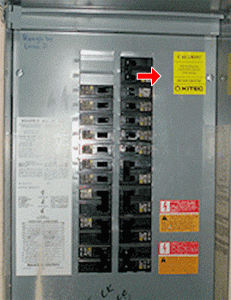
If you are the owner of a newer property built between 1995 and 2007, you may know that your house is plumbed, not with copper tubing, but with a plastic piping known collectively as PEX.
What you may not be aware of, is that for those years a problem existed with the fittings that connected the pipes. Not all PEX is a problem; it is only a brand of PEX (so far) that has shown issues. The pipes that are identified to be at issue are known by the brand name Kitec, which is manufactured in Canada by IPEX Inc.
They were also sold under the brand names of “IPEX Aqua”, “IPEX Homerite”, “PEX-Al-PEX”, “PlumbBetter”, “WARMRITE”, “Kitec XPA”, “AmbioComfort”, “XPA”, “KERR Controls” and “Plomberie Amelioree”.
The pipes themselves are not the cause of the problem, although their rupture is the cause of the flooding. What causes this rupture is an increase in pressure in the pipe caused by a blockage.
The blockage is caused by a chemical reaction known as dezincification, which accelerates corrosion in the brass fittings when they are exposed to oxygen and moisture. Brass is an alloy that is primarily composed of copper and zinc. When fittings experience dezincification, zinc leaches out of the brass fittings, leaving a blockage of zinc oxide that leads to leaks, restricted water flow, and breakage. These Kitec brass fittings were recalled in 2005. (An earlier recall of different brass fittings was issued in 1995, it is not known if this recall was because of the same concern)
So, apart from waiting for a burst pipe to tell you something has gone wrong, how do you identify that you may have an issue?
First and foremost, if your house was plumbed before 1994 or after 2007 the chances are you do not have any faulty PEX plumbing. If your property was plumbed between those years you will need if you can see any exposed PEX piping in the basement areas.
If your basement is finished, often, the best places to look for the Kitec system are near the hot water tank or in the mechanical room where the pipe is connected to or exits the walls. Also look under kitchen sinks or bathroom vanities, where the pipe and/or fitting exits the wall. The pipes will look plastic and be colored Red, Blue or Amber.
If you find these pipes, look at your electrical panel. I know that sounds strange, but electrical panels should be grounded to the water pipes in the property.
PEX water pipes do not provide a sufficient ground, even though they have aluminum in them, so you may find a yellow sticker attached to the panel.
 The sticker is small, around 2.5cm by 6 cm and will be located on the panel front, side, inside the door or on the door itself. DO NOT OPEN THE PANEL TO LOOK INSIDE, call an inspector or electrician. It may say Plumbetter or Kitec. However finding a similar sticker may not show you have Kitec plumbing fittings just as not finding it does not prove you don’t have them. It’s just a first indicator of where to look next.
The sticker is small, around 2.5cm by 6 cm and will be located on the panel front, side, inside the door or on the door itself. DO NOT OPEN THE PANEL TO LOOK INSIDE, call an inspector or electrician. It may say Plumbetter or Kitec. However finding a similar sticker may not show you have Kitec plumbing fittings just as not finding it does not prove you don’t have them. It’s just a first indicator of where to look next.
Next, look along the pipes to see if you can see any of the brand-names stamped on the pipe.
If you do, then look to where a fitting might be, usually at a junction of the pipe to another.
Where the fittings are visible look for the words Kitec or KTC on them.
The terms CSA B137.9/10 or ATSM F1974 could also indicate that you have a Kitec system.
The problem with the situation you may find yourself in now is that if the fittings are IPEX made Kitec, and then they will eventually fail.
If in doubt, call in a Home Inspector or a licensed plumber.
Author: Phillip Teasdale, Lead Home Inspector at BLUE JAY HOME INSPECTIONS

